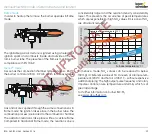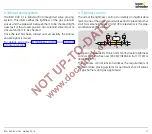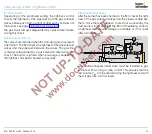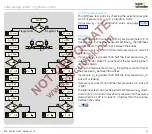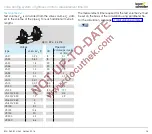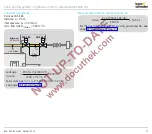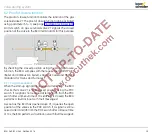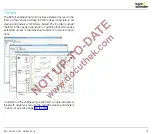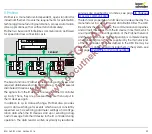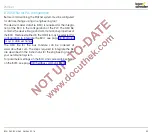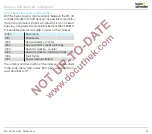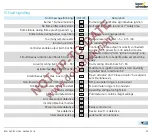
BCU 560, BCU 565 · Edition 02.16
35
Valve proving system > Tightness control
6 .1 .3 Test period t
P
Depending on the burner capacity, the tightness of the gas so-
lenoid valves must be checked in accordance with the relevant
application standard, e.g. EN 676, EN 746, NFPA 85 and NFPA 86.
BCU 560..C1
µC
P
13
14
45
47
58
48
p
u
/2
TC
PZ
PZL
PDZ
M
>750°
ϑ
1
2
3
p
u
/2
PZ
V
p1
V1
V2
p
u
p
z
p
d
The test period t
P
is calculated from:
– Opening times t
L
for V1 and V2,
– Measurement times t
M
for V1 and V2.
t
P
[s] = 2 x t
L
+ 2 x t
M
6 .1 .4 Opening time t
L
Standard EN 1643:2000 allows a maximum opening time of
3 s for the tightness test if the main gas valves are actuated
directly. If gas can flow into the combustion chamber when a
valve is opened, the gas volume must not exceed 0.083% of
the maximum flow rate.
6 .1 .5 Measurement time t
M
The sensitivity of the tightness control in the BCU can be ad-
justed for each individual system by adapting the measure-
ment time t
M
. The longer the measurement time t
M
, the greater
the sensitivity of the tightness control. The measurement time
is set using parameter 56 to a value between 3 and 3600 s,
see page 97 (Measurement time V
The required measurement time t
M
is calculated from:
Inlet pressure p
u
[mbar]
Leakage rate Q
L
[l/h]
Test volume V
p1
[l]
Calculation of the test volume, see page 36 (Test vol-
For one test volume V
p1
between 2 gas solenoid valves
Adjustable using parameter 56
t
M
[s] =
(
2 x p
u
x V
p1
)
Q
L
For a large test volume V
p1
with reduced testing time
Adjustable using parameter 56
t
M
[s] =
(
0.9 x p
u
x V
p1
)
Q
L
Conversion into US units, see page 124 (Converting units)
Leakage rate
The BCU tightness control makes it possible to check a specific
leakage rate Q
L
. Within the scope of the European Union, the
maximum leakage rate Q
L
is 0.1% of the maximum flow rate
Q
(N)max.
[m
3
/h].
Leakage rate Q
L
[l/h] =
Q
(N)max.
[m
3
/h] x 1000 [l/h]
1000 x 1 [m
3
/h]
▼









